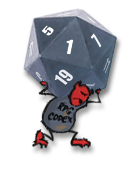Sure, but think about what wilderness is. It's so vast, it's so full of absolute nothingness, that you can wander aimlessly for months before finding anything resembling civilization, a natural landmark, or anything of note whatsoever.
Solasta simulates this by only "allowing" you to visit locations that you already know about thus relieves you from the quite literally pointless exercise of experiencing every droll moment of trudging through utterly unnoteworthy terrain. By surprising you with occasional discoveries of sites and points of interest, it's giving you the most sensible method of maintaining the sense of space but without the ridiculous square map of uncover inch by inch.
If there's a better way to do it, I'm all ears.
Edit: I'd also like to hear the opinion of anyone who's ever DM'd a PnP campaign who was able to handle wilderness exploration in any other way.
I'm in the same camp as you, Crispy. For P&P we'd basically have a destination or purpose in mind such as look for X that you have reason to believe is north of where you are, all of which are best served by waypoints that you choose and then track passing time, supplies used, random encounters, etc. and I think that's the best way to do it then you "zoom back in" to the group if there's something notable for them to do/react to.
I think it's better than randomly removing fog of war and pixel hunting looking for caches of hidden crap the devs put in some random brick or trash can for reasons.







![Glory to Codexia! [2012] Codex 2012](/forums/smiles/campaign_tags/campaign_slushfund2012.png)





















